Longship; Project Status Fall 2024
The industry players in the Longship project provide regular updates on the progress of their work. Here, you’ll find the latest project status this fall, along with some developments in carbon capture and storage (CCS).
Longship is Europe’s first full value chain for capture, transport and storage of CO2 from industries. The project is currently under development and is planned to be operational by 2025.
Here you can read more about the current status of Longship, fall 2024.
Northern Lights: The First Part of Longship is Launched
Today marks the opening of the Northern Lights facility in Øygarden, ready to receive CO2 from emission sources both nationally and internationally.
Northern Lights is a central part of the CCS chain in the Longship project. The event in Øygarden is attended by representatives from government and industry – locally, nationally, and internationally.
With this facility, Northern Lights has established the world’s first open and flexible infrastructure for CO2 storage. This allows industrial players, both in Norway and internationally, to utilize the storage services without needing to build their own storage facilities. Northern Lights’ capacity in the first phase is 1.5 million tons of CO2 per year, with plans for significant expansion.
Equinor, Shell and TotalEnergies
Northern Lights is a collaboration between Equinor, Shell, and TotalEnergies, responsible for the transport and storage of CO2 in the Longship project. Northern Lights receives CO2 from various industrial sources and transports it by ship to Øygarden. The CO2 is then injected into a reservoir in the North Sea, consisting of porous rock layers with dense shale layers above, more than two kilometres beneath the seabed, where the CO2 can be safely stored permanently.
Northern Lights plays a key role in the Longship demonstration project. Equinor has been a pioneer in exploring offshore CO2 storage and was early in identifying a suitable storage site in the North Sea. In 2017, Shell and TotalEnergies joined as partners, forming the Northern Lights Joint Venture. In 2020, the government announced support for Longship, committing to co-finance Northern Lights as part of the CCS initiative. This made it possible to move from the planning phase to the actual construction of the facility in Øygarden. Construction began in 2021. Despite challenges such as the pandemic and delays in various supply chains, the project has been completed within budget and on schedule.
Throughout the process, Northern Lights has worked closely with local authorities and the community in Øygarden, focusing on ensuring local benefits in terms of jobs and skills development.
Broad Collaboration
Longship is a demonstration project, aiming to show that a full-scale CCS chain is achievable. In addition to Northern Lights, Longship includes Heidelberg Materials’ cement plant in Brevik and Hafslund Celsio’s waste-to-energy plant at Klemetsrud in Oslo.
The cement industry is one of the largest sources of industrial CO2 emissions globally. The plant in Brevik aims to become the world’s first cement plant with full-scale CO2 capture. The facility will capture 400,000 tons of CO2 per year, representing about half of the plant’s total emissions. The plant in Brevik is seen as a pioneer, demonstrating that CCS is possible in a sector with very high emissions. The goal is for the facility to be ready by December 1st this year.
Hafslund Celsio’s waste-to-energy plant at Klemetsrud in Oslo has one of the largest CO2 emissions in its sector. The facility captures CO2 from the incineration of waste that would otherwise be released into the atmosphere. The project’s goal is to reduce emissions by around 350,000 tons of CO2 per year. In April 2023, Hafslund Celsio decided to pause its capture project to evaluate solutions related to cost reductions. This does not affect the completion of Longship as a full CCS chain. Hafslund Celsio is now working on a decision basis for the way forward.
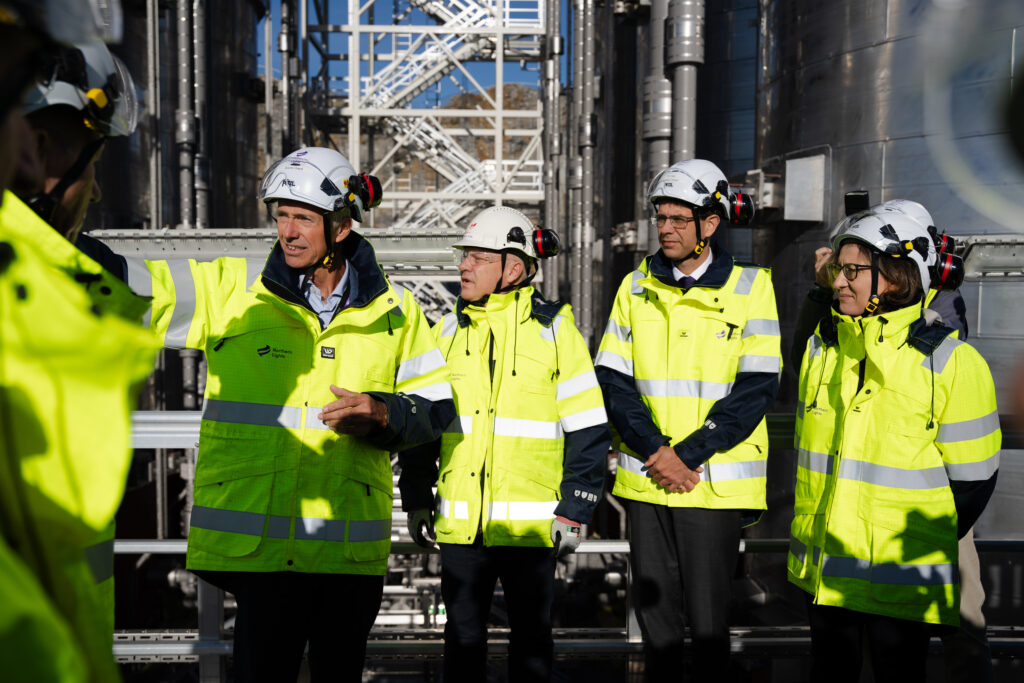
Realizing Benefits
As part of the agreement with the state and in parallel with the development, the industrial players share their knowledge with the world. This is done through numerous visits to the facilities by political leaders, regulators, industry, and media – both nationally and internationally. This is an important part of the benefits realization work in the wake of Longship. Northern Lights aims to drive technology development and cost reductions throughout the entire CO2 management chain – making CO2 management accessible to governments and industrial players. There are already several examples of this in Europe. At the same time, Northern Lights contributes to business development at home, especially around the facility in Øygarden.
The Role of Gassnova
Gassnova was established in 2005 to promote the development of CO2 management in Norway. The state-owned enterprise is the government’s advisor on CCS-related issues and plays a crucial role in coordinating collaboration between industrial players in Longship. Today, Gassnova oversees the development projects on behalf of the state, which finances about 80 percent of Longship. At the same time, the enterprise ensures that the experiences from Longship are documented and shared with subsequent projects. Through its role, Gassnova is central to bringing CCS technology from research and pilot projects to full-scale implementation.
– The opening of the Northern Lights facility in Øygarden is an important part of Norway’s efforts against global climate change. With Longship, we demonstrate how the combination of technological innovation, public support, and good collaboration can lead to real emission reductions. We see that a number of subsequent CCS projects are under planning. Europe is now developing policies that facilitate CCS, says Harald Anvik, Gassnova’s head of Longship project follow-up.
Gassnova congratulates Northern Lights on today’s opening. This is an important milestone towards the launch of the entire Longship by 2025.
Longship; Good Neighbour’s Work Things Out
The residents of Brevik are accustomed to having the cement factory as their closest neighbour. As the carbon capture facility is now being constructed and gradually completed, Heidelberg Materials maintains close dialogue with the neighbour’s and the surrounding community.
When a large-scale project like Brevik CCS is in the construction phase, the extensive activity can affect those living near the factory. It’s natural for the local population to wonder whether the new carbon capture facility will impact their daily lives once it becomes operational. Therefore, it is essential that the neighbour’s, represented by local associations, are kept informed and given the opportunity to discuss topics of concern. Heidelberg Materials has consistently worked actively to involve the local community in line with their needs and expectations. Preserving a neighbourly relationship that has lasted for over 100 years is valuable …
– An important outcome of the Longship project, of which Brevik CCS is a part, is sharing knowledge with subsequent CCS projects. The good processes between Heidelberg Materials and the local population in Brevik, provide valuable insights that future carbon capture facility developers can benefit from – both nationally and internationally, says Senior Advisor Hans Jørgen Vinje of Gassnova.
Longship; Carbon Catcher Simulator (OTS) in Brevik
Brevik CCS in Norway is part of the Longship project, which aims to significantly reduce CO2 emissions from cement production. A crucial component at Brevik CCS is a custom-designed simulator.
The Operator Training Simulator (OTS) will play a vital role in the CCS project in Brevik, by allowing operators to learn and practice the operation of a chemical process – in a virtual and risk-free environment. OTS can help operators master operations under various conditions and handle any unforeseen events that may arise during the process.
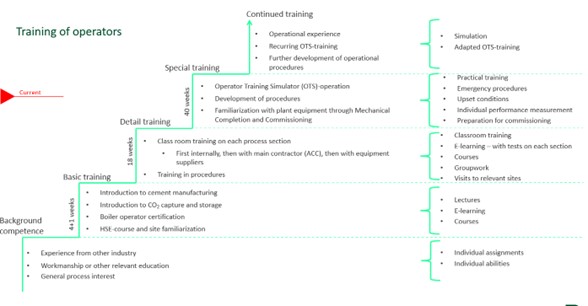
Initiative from Brevik CCS
Project Manager Tor Gautestad at Brevik CCS has been the driving force behind the OTS sub-project. – I initiated the process by asking Aker Carbon Capture about the possibility of creating a digital twin to simulate the process and train operators. They confirmed this, based on offshore projects with Kongsberg Digital. Although the Brevik facility is smaller than the offshore platforms Aker and Kongsberg Digital have worked with previously, the OTS solution in Brevik is also very complex, says Tor Gautestad.
Aker Carbon Capture has provided the capture technology used at Brevik CCS. MAN Energy Solutions has contributed with Carbon Capture Heat Recovery technology, which recovers heat from the compression system for use in the carbon capture plant, making the entire process more energy-efficient.
Innovation and Knowledge Sharing
Longship is Europe’s first approved full-scale CCS project. Its purpose is to demonstrate that CO2 management is safe and feasible. Longship aims to be a significant contributor to the development of CCS as a climate measure. This includes developing solutions and sharing knowledge with subsequent projects. – OTS is a prime example of a contribution from Longship, where players like Kongsberg and Aker develop customized CCS solutions – based on offshore experience. OTS solutions stemming from Norwegian knowledge environments can provide important learning for upcoming CCS plants, says Senior Advisor Hans Jørgen Vinje at Gassnova.
Training Content
OTS ensures that operators have the necessary knowledge and skills, including in-depth knowledge of CCS technology. This enables them to handle equipment and processes efficiently and safely. The training covers all aspects of CO2 capture, compression, transport, and storage. The program includes technical training which provides a comprehensive overview of capture technology, compression techniques, and equipment used in the process. Safety and emergency procedures are other critical components. Environmental and regulatory requirements cover knowledge of environmental regulations and measures, to minimize risk of harm.
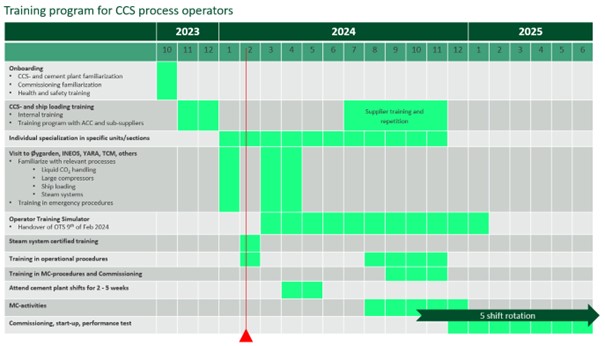
Comprehensive Training Plan
OTS involves a carefully planned, phased training, evaluation, and certification process.
Training for operators and maintenance workers is followed up with further education and refresher courses. Operators’ skills are regularly evaluated through tests and practical assessments. Follow-up programs ensure that competence is maintained. Digital tools and simulation technology are used to provide realistic training and monitor training progress.
– OTS increases efficiency and reliability, as well-trained operators contribute to efficient operations, reduce downtime, and increase productivity. Continuous training also promotes a culture of innovation, where operators can suggest improvements based on practical experience. We can simulate different scenarios and see the effects of changes before implementing them in reality. This provides us with valuable data and insights, Tor continues.
Corporate Support
Heidelberg Materials is a global building materials company who owns and operates the Brevik CCS project. The CCS facility in Brevik is the world’s first at a cement plant. Based on the knowledge gained here, Heidelberg Materials has launched several other carbon management projects, some with capture rates which will decarbonize the respective cement plants by 2030.
– Our owners see the potential in the simulator, which can play a crucial role in carbon management at the group’s other cement plants. The management at Heidelberg Materials sees the potential in OTS technology, both for training operators and engineers, and for optimizing operational processes, concludes Tor Gautestad at Brevik CCS.
Collaboration with TCM
There is also cooperation with the Technology Centre Mongstad (TCM), which has more than 12 years of experience operating a CO2 capture facility. About 20 operators from Brevik CCS were at TCM earlier this year to learn more about their experiences. It has proven important to be connected to a real capture facility on a smaller scale, where CO2 capture has been tested in various operational environments over time. This exchange of experiences will continue when Brevik CCS becomes operational.
Current Status of the Longship Project
What is the status of Norway’s largest industrial climate project, featuring technology described by the UN as one of the world’s most crucial for the climate?
Longship is a carbon capture, transport, and storage project (CCS) partially funded by the state. The project involves industrial partners Heidelberg Materials, Hafslund Celsio, and the Northern Lights consortium. The plan is for CO2 from the capture facilities of Heidelberg Materials and Hafslund Celsio to be transported by ship to a reception facility near Bergen. From there, it will be conveyed via pipeline for permanent storage in a reservoir 2,600 meters below the seabed.

Progress of Longship
Construction of Northern Lights’ CO2 transport and storage infrastructure and Heidelberg Materials’ capture facility in Brevik is progressing. As of now, the Brevik CCS is 76 percent complete, while Northern Lights’ storage facility is 94 percent complete. In April 2023, Hafslund Celsio decided to pause the implementation of CO2 capture at the waste-to-energy plant in Klemetsrud, to explore various cost reduction options.
Operational in 2025
Longship, with captured CO2 from Brevik and Northern Lights’ transport and storage, will be operational in 2025. Northern Lights will also transport and store up to 800,000 tons of CO2 annually from Yara’s ammonia and fertilizer plant in Sluiskil, Netherlands – in addition to 430,000 tons of biogenic CO2 per year from Ørsted’s two power plants in Denmark, starting in 2026.
This will utilize the overcapacity in Northern Lights infrastructure already established through Longship.
In December 2023, Northern Lights was nominated by the EU Commission to receive 131 million euros from the Connecting Europe Facility (CEF) for Phase II construction.
Project Status in Detail
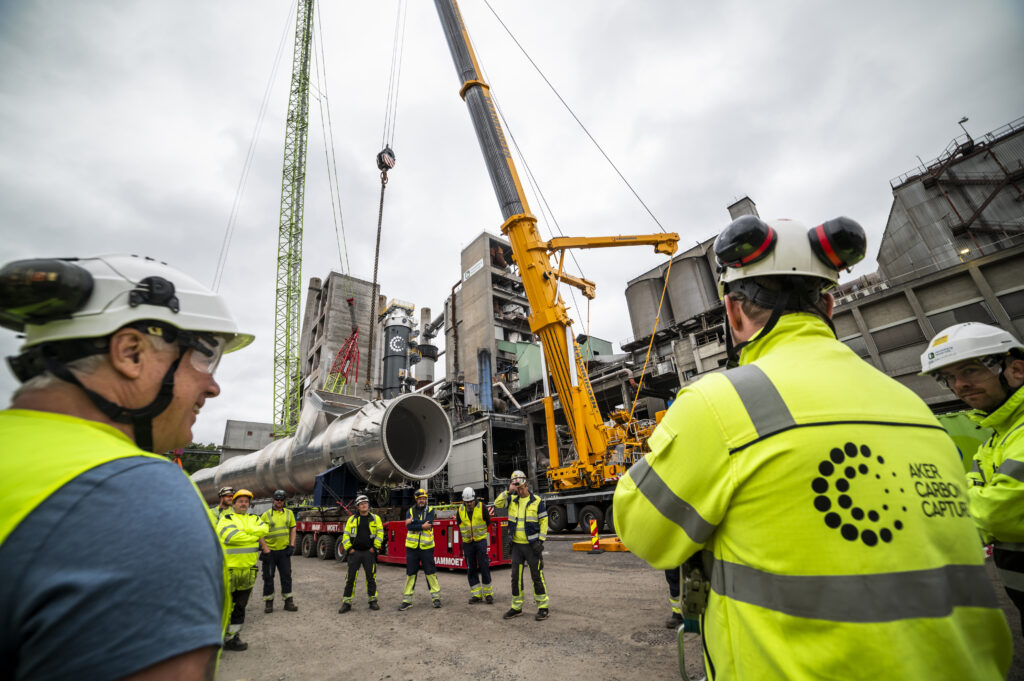
Heidelberg Materials
As of April 30, 2024, the cumulative progress for the Brevik CCS project is 76.2 percent.
Brevik CCS and Aker Carbon Capture (the capture technology provider) aim to be mechanically complete (construction finished and the facility ready for commissioning) by December 1, 2024.
Work and progress in April 2024 have increased the likelihood of achieving this milestone.
A significant milestone was reached in early May 2024, with the placement of the compressor and compressor motor. Another major milestone was achieved in August 2023, with the placement of the absorber and absorber stack.
The state and Heidelberg Materials have signed an agreement ensuring the completion of the capture project following communicated cost overruns. According to the agreement, Heidelberg Materials is committed to completing the project and covering increased costs. In return, the company retains a larger share of the potential returns. The state will provide startup support of up to 150 million NOK when the facility is ready to send the first load of CO2, to Northern Lights.
Brevik CCS is garnering significant interest both internally and externally. Since the inception of Longship, Heidelberg Materials has made further advancements in CCS and now has several planned projects. One of these is Slite CCS on Gotland in Sweden, one of Europe’s largest CCS projects, aiming to capture up to 1.8 million tons of CO2 annually. This corresponds to four percent of Sweden’s total emissions today.
Northern Lights
As of April 30, 2024, the construction of the Northern Lights CO2 storage facility is 94 percent complete. Storage infrastructure consists of an onshore reception terminal, an underwater pipeline, two injection wells, and the storage complex. Pre-commissioning and commissioning activities for the Northern Lights facilities have started or will start soon.
Dalian Shipbuilding Offshore Co., Ltd. (DSOC) is building ships dedicated to CO2 transport for Northern Lights. The overall progress for the first two ships is 88.4 percent complete (as of April 30, 2024).
Northern Lights has signed a transport and storage agreement with Yara to store up to 800,000 tons of CO2 annually from Yara’s ammonia and fertilizer plant in Sluiskil, Netherlands – starting in 2025. The agreement is approved by the Norwegian Ministry of Energy. Northern Lights has also signed a transport and storage agreement with Ørsted to store 430,000 tons of biogenic CO2 annually from two power plants in Denmark, starting in 2026.
Northern Lights has ambitious growth plans, aiming to expand storage capacity in line with market development and the maturation of commercial agreements. For the next phase of development, Northern Lights aims for an additional capacity of 3.5 million tons per year.
Northern Lights was nominated to receive 131 million euros under the EU’s Connecting Europe Facility (CEF) funding scheme. Nearly 480 million euros have been allocated from the CEF to four CO2 transport and storage projects in Europe. According to the European Commission, these projects represent the first building blocks of a future European carbon value chain, planned to be completed by the end of the decade. This is expected to contribute to the EU’s decarbonization goals by 2030.
Northern Lights is included as a Project of Mutual Interest (PMI) by the European Commission, on the new list of the EU’s energy projects of common and mutual interest.
Northern Lights received 894 visitors to the facility in April, bringing the total number of visitors to over 8,000 since its inception.
Hafslund Celsio
In April 2023, Hafslund Celsio decided to pause the implementation of the CO2 capture project at the waste-to-energy plant in Klemetsrud. This was done to evaluate various cost reduction solutions. The company’s own estimates showed that the expected costs of the project were about three billion NOK higher than at the investment decision.
Hafslund Celsio is owned by Hafslund, Infranode, and HitecVision. On June 1 of this year, the company changed its name to Hafslund Celsio to align with other fully or partially owned companies of Hafslund.
Celsio has signed two FEED contracts with Aker Carbon Capture and Aker Solutions. This is to develop carbon capture at the waste-to-energy plant in Klemetsrud, and one with Aker Solutions for interim buffer storage at the Port of Oslo. The capture facility will be based on Aker Carbon Capture’s modular Just Catch 400 unit, with a design capacity to capture up to 400,000 tons of CO2 per year.
A new project basis will be submitted to the government in the summer of 2024. Government will decide on support for the project and any changes to the state support agreement, once a sufficiently mature and quality-assured project basis is available.
The changes in the CCS project in Oslo do not affect the completion of Longship as a full chain for the capture, transport, and storage of CO2. Heidelberg Materials is capable of capturing CO2, and Northern Lights is capable of transporting and permanently storing CO2 from 2025.
Longship; Brevik CCS Shares Knowledge and Experience
The Brevik CCS construction project, led by Heidelberg Materials, is in its third year. Throughout 2023, the project has faced significant challenges and achieved critical milestones.
Global events such as the war in Ukraine, with material shortages and rising prices in its wake, have directly impacted projects like Brevik CCS. Part of the mandate for the Longship participants – Heidelberg Materials, Hafslund Oslo Celsio, and Northern Lights – is to contribute to increased experience and awareness regarding CO2 management. Experiences are communicated appropriately through reports, visits to the facilities, and participation in conferences and presentations.
The state covers a significant portion of the project costs. In return, it is required that the Longship participants share their experiences with subsequent CCS projects. Brevik CCS’s 2023 experience report is part of the requirements in the State Support Agreement (SSA), which Gassnova follows up on.
Topics covered in Brevik CCS’s experience report include technical solutions, experiences from the project implementation phase, project management, environmental impact, health, safety, and environment (HSE), business models, and potential improvements. The report from Brevik discusses the experiences from 2023 and provides a broader understanding of the complexity of CCS projects of this magnitude – during a hectic construction phase.
A similar experience report for 2023 has also come from Northern Lights.
Status and Results
Throughout 2023, Brevik CCS made significant progress despite challenging external conditions. Key technical advances included completing the engineering work on the CO2 capture plant, and successfully installing key infrastructure such as CO2 storage tanks and pipeline systems. These milestones represent significant technical and operational progression in the project. This illustrates the project team’s need for flexibility to handle uncertainty in the supply chain.
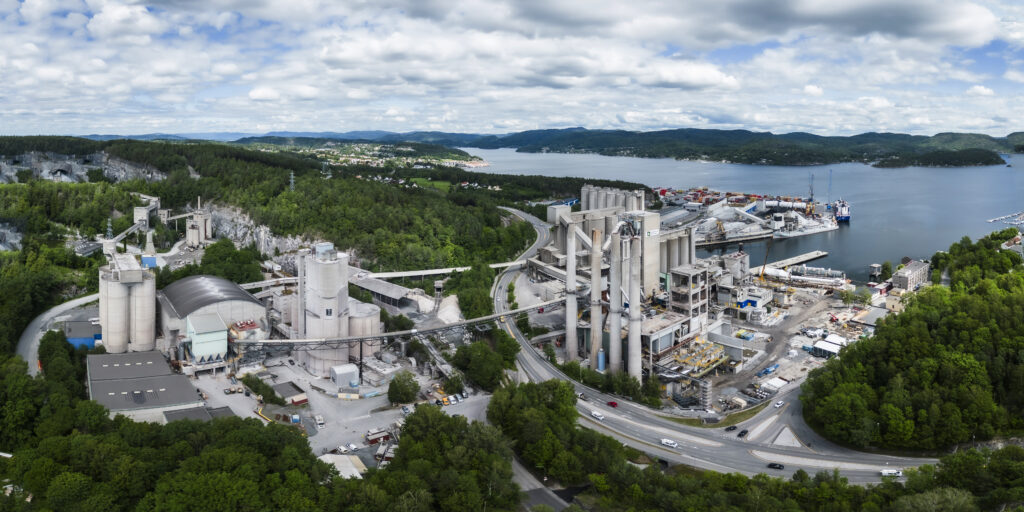
Technical Challenges
The technical work encountered several challenges, especially related to pipeline systems and standardizations. The choice between pipe standards such as ASME, ANSI, ASTM, and EN impacted the availability and delivery time of materials. This affected not only the project’s progress but also the cost frameworks and efficiency.
Technical Proficiency
A lack of specialized knowledge in pipeline systems within the project team led to challenges related to deliveries, fabrication, and installation. This underscores the importance of specialized expertise in future projects, especially related to complex pipeline systems.
Material handling
2023 demonstrated how crucial sufficient supply chain management is for a large and complex project under critical market conditions. Project management had to adjust budgets due to inflation and delays in material deliveries. This affected both schedules and finances. The learning point is to anticipate and plan for economic adjustments, especially given enhanced global uncertainty.
Engineering and Installation
The engineering phase of the Brevik CCS project involved development of detailed milestones and process definitions. An example of challenges in this context is the installation of cold insulation on the tanks for liquid CO2. This required careful climate control and planning, especially in the colder months of the year.
Training
A key theme for 2023 was the training of operational personnel. Using an Operator Training System (OTS) became a critical success factor for effective training. Ensuring a smooth transition to full operation is essential. The operators being well-prepared before the start of the plant will continue to be a priority into 2024.

Safety and Environment
Brevik CCS maintains high standards for environmental and safety at the workplace, and Norwegian authorities impose strict requirements. Strict emission permits and compliance with environmental regulations are key to the project’s acceptance in the community. Experience from these processes will be very important for similar projects going forward. It is important to have good dialogue with local authorities and the population nearby the facility.
Brevik CCS; Summary
In the third year of the Brevik CCS project has provided knowledge which will be useful for future carbon capture and storage projects. The importance of technical expertise, thorough planning, and adaptability has been clearly demonstrated over the past year. The insights from 2023 will not only affect the next phases of the Brevik project, but they will also be valuable for new, global CCS initiatives.
Longship; Northern Lights Shares Knowledge and Experience
Part of the mandate for the Longship actors Heidelberg Materials, Celsio Oslo Varme, and Northern Lights is to contribute to increased experience and awareness towards CO2 management. Experiences are communicated appropriately through reports, visits to the facilities, and participation in conferences and presentations.
Northern Lights has prepared an experience report for 2023, which is their review of the past year – and part of the requirements in the State Support Agreement (SSA). Topics to be covered include technical solutions, experiences from the project implementation phase, project management, environmental impact, health, safety, and environment (HSE), business models, and potential improvements. – All these topics will be important in the work to reduce global carbon emissions in an efficient way, with the help of CO2 management – says Aslak Viumdal, senior advisor at Gassnova.
A similar experience report for 2023 will also come from Heidelberg Materials.

10 areas of learning from 2023
Northern Lights experience report for the reception terminal and subsurface (pipes, well control, and geological storage) covers the period from January 1 to December 31, 2023. Purpose is to improve future projects by providing insights and learning in areas such as project implementation, safety, efficiency, and sustainability. Knowledge and experiences from 2023 summarizes over 10 themes:
QUAY UPGRADE AND EXPANSION
A review of the quay design revealed discrepancies between initial calculations and the actual specifications for ships that will dock – leading to costly modifications. To avoid similar situations, the need to design future quays with greater flexibility that allows changes in critical ship design parameters is emphasized. Sufficient margins in the design are recommended to handle the uncertainty around ship design.
FLANGE MANAGEMENT
Several RTJ carbon steel flanges were affected by corrosion and mechanical damage. This underscores the need for better training of personnel and improved maintenance of carbon steel pipe coils stored outdoors. A more thorough flange management procedure is recommended, including improved handling and stricter maintenance requirements.
FIXED LIGHT INSTALLATIONS
The design included a significant number of fixed lights without taking into account that the facility is often unmanned. This highlights the challenges of transferring project-specific needs to the design phase. It is recommended to clearly define specific requirements in the work scope included in the contract with the contractor, to avoid future overruns.
INSULATION SCOPE ON PIPELINES
Although the insulation work was performed according to the specifications, it did not take into account that some insulated pipe segments and valves would not be exposed to icing under normal operation. This points to the need for a better evaluation and specifications to avoid unnecessary insulation. A thorough evaluation of the need for insulation is recommended.
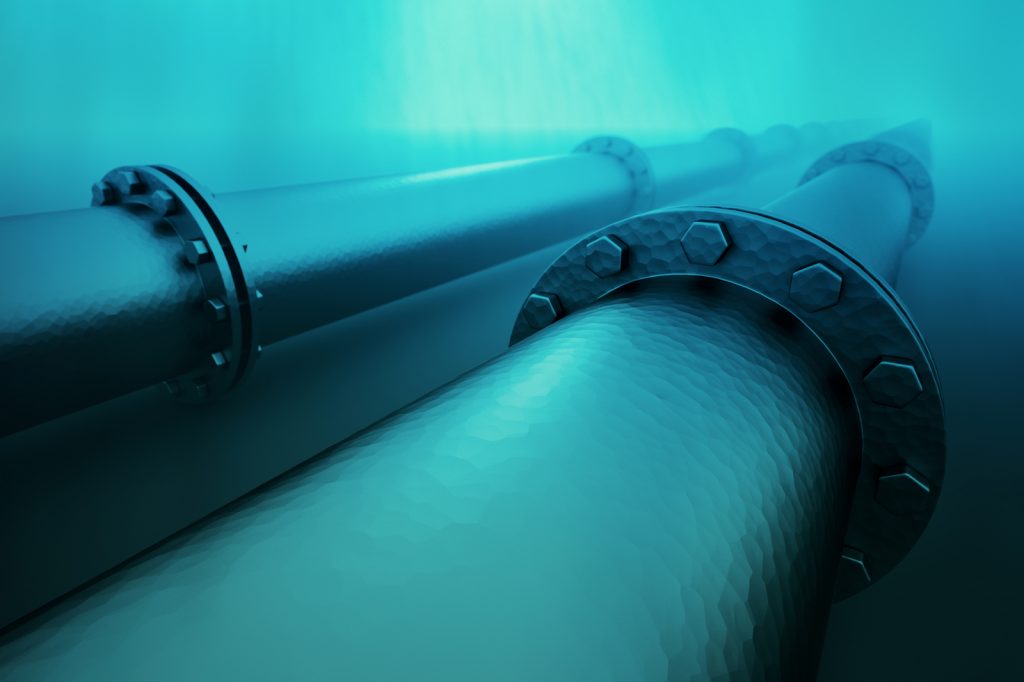
PIPELINE CLEANING WITH FCG
“Flooding, Cleaning, and Gauging” (FCG) is a process often used for maintenance and inspection of pipelines. The first step involves filling the pipeline with a fluid, often water, to prepare it for the cleaning process. In the next phase, specialized equipment (“pigs”) is used to clean the pipeline. The final phase involves inspection and measurement of the pipeline to ascertain damages or deviations from specifications. Regular FCG prevents leaks and other deviations which can lead to environmental damage or operational downtime.
Despite a large number of “pigs” through the pipeline in June 2023, it was still judged to not be sufficiently clean. There were more impurities in the pipeline than anticipated, which underscores the need for detailed planning in this area, before CO2 injection. Multiple rounds of FCG are recommended to ensure the pipeline is sufficiently clean.
INSTALLATION OF DCFO AND NODES BASED ON “LAY-AWAY”
DCFO refers to Direct Current Fiber Optics, and “Lay-away” refers to a procedure used during the installation of cables on the seabed. This method involves laying cables temporarily, before they are moved to their final position or before further construction activities take place. “Lay-away” was first used by the project. However, experiences suggest that the “lay-in” method is recommended for future installations. This involves systematically placing cables in position on the seabed, at the site where they will be mounted.
TESTING OF DCFO CABLE DURING INSTALLATION
The project introduced an installation sequence that required testing for each joint from both the OSA platform and the installation vessel. It was found that testing from the installation vessel alone would make operations efficient, reduce complexity, and be more cost-effective.
REVIEW OF THE START-UP PLAN FOR NORTHERN LIGHTS
In September 2023, a full-day workshop was conducted in the project, focusing on key activities up to and including the acceptance test. The result of the session was very positive, and it is recommended to hold such gatherings at least once a year.
SPECIFICATIONS SUITABLE FOR THE PURPOSE
Time spent developing solutions based on existing specifications has in some cases resulted in “overdesign”. This reveals the need for specifications that address low-cost solutions with various products and significantly altered risks. Development of a new specification set from scratch for CCS projects is recommended.
APPLICATION PROCESS FOR CO2 INJECTION AND STORAGE
To be able to inject and store CO2 at the Northern Lights facility, an application must be sent to the Environment Directorate for injection and storage in accordance with pollution regulations. The Directorate then sends the application to the EFTA Surveillance Authority (ESA) for information. The Directorate processes the application and drafts a permit, which is sent to ESA for comments. ESA has four months to respond. The application process above ESA was new for the parties involved in Northern Lights, and led to extra work. Therefore, it is recommended to streamline the process by a joint application for injection and storage, both to the Environment Directorate and ESA.
Continuous learning, adaptation, and improvement
The inquiries which Northern Lights presents in the experience report are not only relevant to the development of Northern Lights – but also to the entire carbon capture and storage sector. The experience report emphasizes the focus on continuous learning, adaptation, and improvement in meeting technical, operational, and environmental challenges. Experiences and standards from the oil and gas activity must be continuously challenged so that the solutions are adapted to the CO2 management business model, (expected) requirements, and payment ability.
The complete experience report from Northern Lights might be downloaded here.
Gassnova; Sharing of risk paves the way for Longship
Harald Anvik leads a dedicated team at Gassnova responsible for the follow-up of Longship. On behalf of the Ministry of Energy, the team oversees the state’s interests in the CCS project.
The state is engaged in Longship as a response to global climate changes. Carbon capture and storage (CCS) is an important measure to reduce Norway’s carbon footprint, and the main goal of Longship is to demonstrate that a full CCS chain can be realized. As Longship is developed, experiences are also shared with other European countries – where CCS technology is gradually gaining a strong foothold. Northern Lights, with its transport and storage infrastructure, has already secured new volumes from Yara in the Netherlands and from Ørsted in Denmark, where CO2 from these will be stored on the Norwegian continental shelf.
Disbursement of support for construction of the facilities
The state has allocated significant funds to establish Longship as a CCS chain, and part of Gassnova’s responsibility is to disburse the correct support to the actors for the construction of the facilities. The actors themselves are responsible for constructing the facilities, and they will own and operate the facilities upon completion.
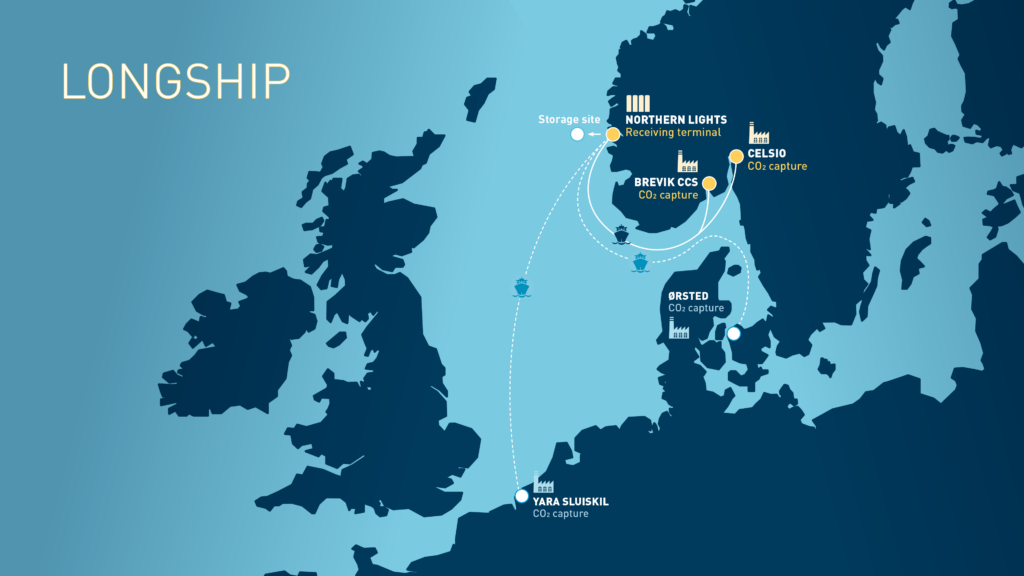
Risk distribution and risk-based follow-up
The state’s choice to support a whole chain, with capture, transport, and storage, is key to Longship becoming a reality. The state has taken on significant responsibility as a risk mitigator between the actors, to give them the opportunity to frame their own project with acceptable uncertainty.
Based on the actors’ reporting and the progress of the projects, Gassnova conducts its own risk assessments and analyses to advise the Ministry of Energy, and to protect the state’s position in the contracts. – Risk-based follow-up is key to a small team being able to monitor the support agreements, and the significant funds the state has made available for Longship. Gassnova sits close to the actors and understand the developments in the projects, this is key to using resources effectively, especially when projects encounter challenges, says Harald Anvik.
“Uncharted Territories”
The full-chain CCS in Longship represents “Uncharted Territories “. The project follow-up team at Gassnova has been impressed by the industrial partners’ efforts to find solutions to challenges no one before them has had to deal with – from working at the interface between facilities, to preparations for operation, and to unforeseen delays in the construction process, especially with the effect of challenges around Covid and the war in Ukraine. Building facilities to be integrated into existing factories is particularly difficult. It is important not to underestimate the scope of integration, available power, necessary areas, regulations, and the like.
Knowledge sharing and social responsibility
Parallel to the construction projects, one of the goals of Longship is to drive knowledge sharing. This is especially true for new actors with CCS in the pipeline. A number of European authorities, representatives from politics, business, and media have visited the facilities in Brevik, Oslo, and Øygarden outside Bergen. Significant efforts are made by industrial actors to meet the state’s expectations in this area.
– A big thank you to Heidelberg Materials, Hafslund Oslo Celsio, and Northern Lights for welcoming visitors who want to see a real CCS facility being built. We are also very satisfied with how the dialogue between the local community and the developers is proceeding in the project. The facilities are located close to the residents’ daily lives, and there will always be challenges with large construction activity. But the impression is that individual cases are resolved as well as possible, precisely through good local dialogue. At the same time, we are pleased that among others, the industrial actor Heidelberg Materials employs locally as their facility in Brevik is eventually prepared for start-up, says Harald.
What have you learned?
The greatest lesson, or rather confirmation, is the importance of collaboration and flexibility. It is also very important to have robust and well-developed agreements in place. The expectations set in the state support agreements also provide a more open and tidy dialogue between the stakeholders in Longship. An advantage for the project is also the traditionally good interaction between the state and the business/industrial sector in Norway. This is something our foreign partners do not always experience at home, and which is well noticed during visits to the Longship actors in Norway, concludes Harald Anvik at Gassnova.
Status Longship February 2024
The Longship project is advancing and scheduled to be operational next year. As the first value chain in Europe, capturing, transporting and storing CO2 for climate purposes. This will be a huge milestone in combating climate change.
The history
The Longship project (.pdf) is the Norwegian Government’s name of the initiative to develop a full-scale CCS value chain in Norway. Demonstrating the potential of CCS to Europe and the world. A carbon capture facility is currently being built at Heidelberg Materials’ cement plant in Brevik, Norway. Hafslund Oslo Celsio started building a carbon capture facility at their waste-to-energy plant in Oslo in August 2022. But construction was put on hold in April 2023. And a new final investment decision is scheduled in the summer of 2024. Northern Lights is currently developing a solution for the transport and storage of CO2.

Longship is progressing
Construction of the Northern Lights CO2 transport and storage infrastructure and Heidelberg Materials’ capture plant is progressing. Brevik CCS is 71% completed and the Northern Lights storage facility is 91% completed.
Hafslund Oslo Celsio (Celsio) decided in April 2023 to introduce a twelve-month cost reduction phase. Therfore placed the construction on hold at the waste-to-energy facility at Klemetsrud. An updated cost estimate showed that the carbon capture project would exceed the maximum budget stipulated in its government funding agreement. A FEED contract with Aker Carbon Capture and Aker Solutions to develop carbon capture is now signed. Celsio has scheduled a new final investment decision in the summer of 2024.
Operational in 2025
Longship will be operational in 2025 with captured CO2 from Brevik, transport and storage, behind the initial plan (late 2024), according to the latest communication from the Government.
Northern Lights has finalized the transport and storage agreement with Yara to store up to 800,000 tonnes of CO2 annually from Yara’s ammonia and fertiliser plant in Sluskil, Netherlands. Northern Lights has also entered into transport and storage agreement with Ørsted to store 430,000 tonnes biogenic CO2 per year from two power plants in Denmark from 2026. These projects utilize the overcapacity in the Northern Lights infrastructure already established through the Longship project.
Northern Lights was selected by the EU Commission in December 2023 to receive € 131 million from Connecting Europe Facility (CEF) for construction works for a Phase 2. Northern Lights are currently in dialogue with the Commission related to the conditions for this potential grant.
More European CO₂ for Northern Lights
Earlier this week (week 47), Northern Lights signed a new agreement on CO2 transport and storage. This time with Yara Sluiskil in the Netherlands. This is a major milestone for the Longship project.
Longship to stimulate market development for CCS in Europe
In January 2021, the Norwegian parliament decided to fund Langskip. This marked the start of the construction phase of Heidelberg Materials Brevik’s CO2 capture project in Brevik, Norway. And Northern Lights’ transport and storage project on the Norwegian west coast. Northern Lights received a grant from the Norwegian government to build and operate an overcapacity transport and storage infrastructure for CO2. Northern Lights has successfully sold this capacity to two industrial projects in Europe – Ørsted in Denmark and now Yara in the Netherlands. Earlier this year, Northern Lights and Ørsted signed an agreement to transport and store 430,000 tonnes of CO2 per year from two power plants in Denmark.
– The agreement in the Netherlands is a milestone for both Northern Lights and Yara and for the development of the market in Europe. It shows that the commercial potential for CCS in Europe is now being realised and that the market for CO2 transport and storage is developing positively. The agreements with Northern Lights fit well with the purpose of the Longship project,” says Morten Henriksen, CEO of Gassnova.
Will remove 12 million tonnes of CO2
Yara Sluiskil is one of the world’s largest ammonia and mineral fertilizer plants. The reduction of 800,000 tonnes of CO2 is equivalent to 0.5 percent of the total annual emissions in the Netherlands (as of 2022). Over the next 15 years, Yara will remove around 12 million tonnes of CO2 from production at Sluiskil. Yara has received EUR 30 million from the Dutch government to support the project.
CCS is a cost-effective solution for decarbonisation that is compatible with existing European production infrastructure, for ammonia and fertilizer production. Yara believes that all technologies must be used to address the climate crisis. The European industry is eagerly awaiting the EU’s CCUS strategy, which is expected to be published early next year.

Based on press releases from the following companies; Yara and Northern Lights
